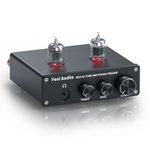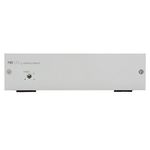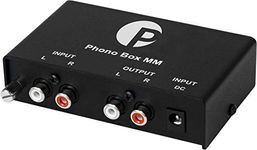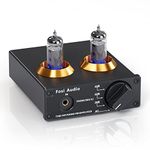10 bestPhono Preampof December 2025
112M consumers helped this year.
1
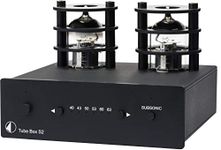
Pro-Ject Tube Box S2 Pure-Tube MM/MC Phono Preamplifier (Black)
Pro-Ject

10.0
2
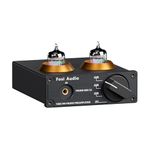
Fosi Audio Box X2 Phono Preamp for Turntable Preamplifier MM Phonograph Preamplifier with Gain Gear Mini Stereo Audio Hi-Fi Pre-Amplifier for Record Player with DC 12V Power Supply
Fosi Audio

10.0
3
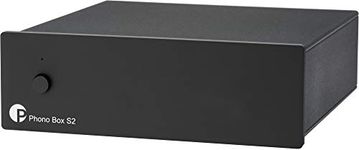
Pro-Ject Phono Box S2 (Black)
Pro-Ject

9.9
4
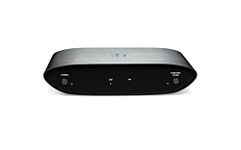
iFi Audio Zen Air Phono – Reduce Hiss & Noise on Vinyl Playback - Affordable Hi-Res Phono Stage Pre-amp for MM/MC Turntable, Phonograph Vinyl, Record Player, RIAA HiFi Preamplifier – Subsonic Filter
iFi

9.8
10% off
5
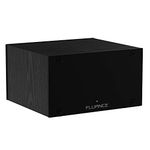
Fluance PA10 High Fidelity Phono Preamp (Preamplifier) with RIAA Equalization for MM Turntables/Vinyl Record Players
Fluance

9.6
Other
6
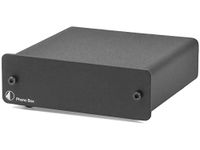
Pro-Ject Audio - Phono Box DC - MM/MC Phono preamp with line Output (Black)
Pro-Ject

9.5
7
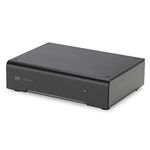
Schiit Mani 2 Phono Preamp for MM, MC, and MI Cartridges (Black)
Schiit

9.3
8

Pro-Ject Phono Box S2 Ultra, Discrete MM/MC Phono Preamp (Black)
Pro-Ject

9.1
9
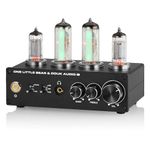
Douk Audio T9 Vacuum Tube Phono Preamp Stereo Turntable Preamplifier with Headphone Output and Treble Bass Control for MM/MC Record Player, Home Hi-Fi Audio, Amplifier, Speaker
Douk Audio

8.9
10
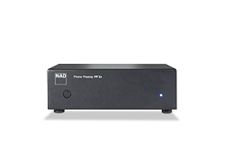
NAD PP-2e Audio Component Phonograph Preamplifier, Black
NAD

8.7
A Guide to Selecting the Best Phono Preamp
Choosing a phono preamp is an important step for anyone looking to get the best sound from their turntable. A phono preamp, also known as a phono stage, amplifies the tiny signal from your turntable so it can be properly processed by your speakers or amplifier. The right preamp can make a big difference in sound quality, so it's important to understand the key features and how they relate to your needs and setup.
Gain
Gain refers to how much the phono preamp amplifies the signal from your turntable. This is important because turntables produce a much lower signal than other audio sources. Gain is usually measured in decibels (dB), and different cartridges (moving magnet or moving coil) require different gain levels. Lower gain (around 35-45 dB) is suitable for moving magnet cartridges, while higher gain (50-65 dB or more) is needed for moving coil cartridges. To pick the right gain, check your cartridge type and its recommended output, then match it with a preamp that offers the appropriate gain setting.
Input Impedance and Capacitance
Input impedance and capacitance are settings that affect how the preamp interacts with your cartridge. Impedance is measured in ohms and capacitance in picofarads (pF). These values can influence the tonal balance and clarity of your music. Moving magnet cartridges usually need higher capacitance (100-300 pF) and standard impedance (around 47k ohms), while moving coil cartridges often require lower capacitance and adjustable impedance. To choose the right settings, check your cartridge's specifications and look for a preamp that allows you to match or adjust these values for optimal sound.
RIAA Equalization
RIAA equalization is a standard curve applied by phono preamps to correct the frequency response of vinyl records. This is essential because records are cut with a specific equalization to reduce noise and improve playback. All phono preamps should have RIAA equalization, but the accuracy of this curve can vary. A more accurate RIAA curve means your music will sound closer to how it was intended. When choosing a preamp, look for one that advertises precise RIAA equalization for the best listening experience.
Noise and Distortion
Noise and distortion refer to unwanted sounds or changes added by the preamp. Low noise means you’ll hear more music and less background hiss, while low distortion ensures the sound remains clear and true to the original recording. These specs are often listed as signal-to-noise ratio (SNR) and total harmonic distortion (THD). Higher SNR (above 80 dB) and lower THD (below 0.01%) are better. If you value clean, detailed sound, look for a preamp with strong performance in these areas.
Connectivity
Connectivity covers the types of inputs and outputs the preamp offers. Most phono preamps have RCA inputs and outputs, but some also include balanced outputs or USB connections for digitizing records. Consider what equipment you already have and how you plan to use the preamp. If you want to connect to a computer, look for a USB output. If you have high-end audio gear, balanced outputs might be useful. Choose a preamp with the connections that fit your setup.
Size and Build Quality
Size and build quality affect where you can place the preamp and how long it will last. Some preamps are compact and easy to fit into tight spaces, while others are larger and may offer better shielding from interference. Build quality can also impact durability and the overall sound, as better materials can reduce unwanted vibrations and noise. Think about your available space and whether you need a portable or more robust unit, then choose accordingly.
Best Reviews Guide Newsletter
Get exclusive articles, recommendations, shopping tips, and sales alerts
Sign up for our newsletter to receive weekly recommendations about seasonal and trendy products
Thank you for subscribing!
By submitting your email address you agree to our Terms and Conditions and Privacy Policy
